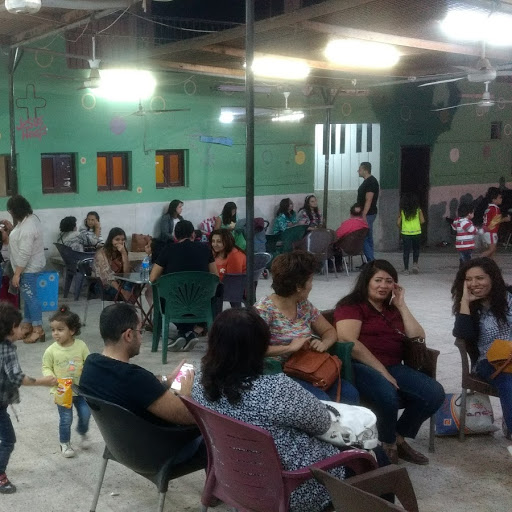From the windows of the train you could see fields of sugar cane and palm trees on either side of the river, but beyond was the desert. There was a real contrast between the green of the cultivated land and the hazy browns of the encroaching desert.
I realised how narrow a band of fertile land supports the 90+ million inhabitants in Egypt, spread out along the Nile River. I was on the train heading south to Minya, a journey of four hours. Minya is the heartland of the Protestant Church in Egypt and many of our students come from the villages around Minya, but I had never had the opportunity to visit. So when one of the students, Moody, invited me to stay with his family, I readily accepted.
Minya is situated mainly on the West side of the Nile, and the main part of the town is squeezed beween the Nile and the Ibrahimiya Canal, built in the 1870s to irrigate the land around. A new town, appropriately called New Minya, has been built on the East Bank of the river, but needless to say, despite the low housing costs and good infrastructure in New Minya, people still prefer to live in the more congested old town.
Minya is a busy place of a quarter of a million people, but compared to Cairo, it is still small enough to bump into people you know. On my first evening we went along to the club at the 2nd Presbyterian Church, one of the biggest Presbyterian churches in the country. The club takes place on a Friday evening, and is a place where people of all ages can gather to chat and play games. Some of the young people were playing volleyball and table tennis, while the adults were more likely to chat around tables or play chess.

The main point of the club was to provide a safe place for people to gather and socialize and be themselves, knowing there would not be any trouble. I have noticed repeatedly how churches of all denominations are busy through the week with people gathering just to sit and talk in safe spaces.
On the Sunday morning I went along to worship at 2nd Presbyterian, but in the evening I had been invited to preach at a smaller church in a slightly less salubrious area. Gad El Seed lies to the South of Minya City and is a warren of narrow alleys. In 2013 there was an outbreak of violence against property belonging to Christians in the area, and a mob of Islamists worked their way from the South. The Gad El Seed church was the first to be burned (over 70 churches were damaged).
Sameh, the pastor, showed me some awful pictures of the destruction. At that time he was still single and he remained to rally his members and encourage them (I know one married pastor whose church was burned down at the same time, and his wife and daughter were so traumatized by the events that they had to move away). It was a tense, even dangerous week, but the community rallied round. The church took three years to be rebuilt, but the congregation is strong and I was impressed by their warmth (and also by their wonderful hospitality afterwards).
I stayed with Moody and his wife and daughter for two of the nights I was in Minya, but the third I stayed on the Dahabeya, a boat on the Nile with four cabins. This is a fundraising venture by CEOSS, the evangelical social development organisation. The original boat had been burnt in the 2013 riots, but it has now been replaced, and it was certainly wonderful to wake up and look out at people fishing in small canoes on the Nile. The scene and the means of fishing would probably not have changed too much over the centuries.
It was good to visit Minya at long last and to be able to engage with the local Christians. At least now when the students say that they are from Minya, I will be able to say I have been!





Greetings from Linwood
LikeLike
Thanks, Eileen. Warm greetings to everyone there.
LikeLike